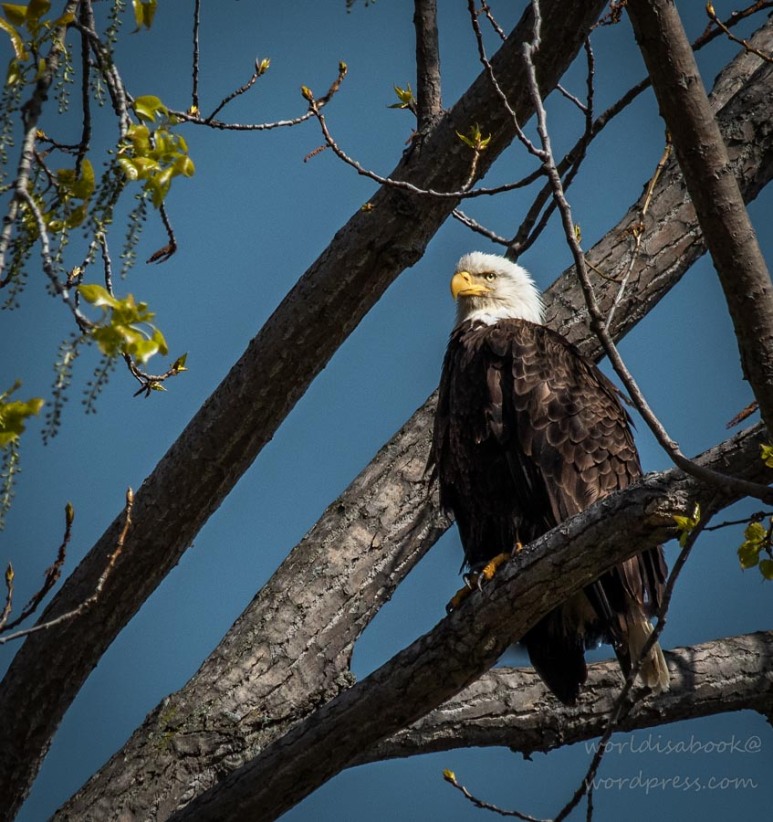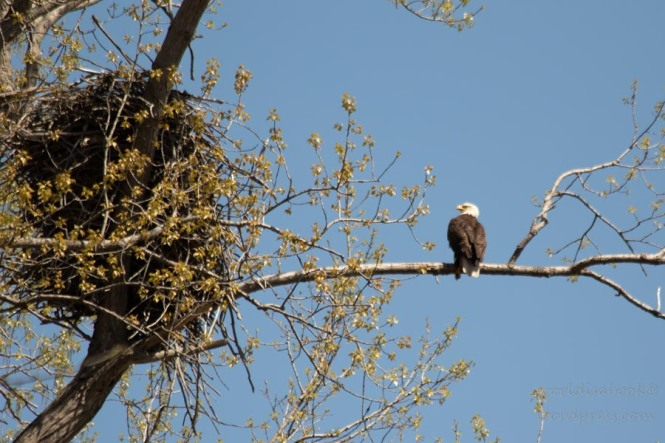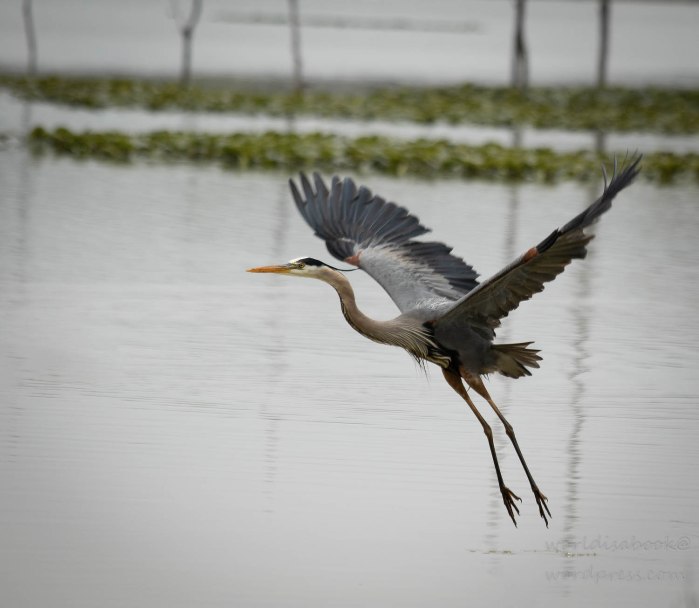Lens-Artists Photo Challenge #48: Wild (6/1/2019)
This week, Tina’s theme is wild. She offers us a range of opportunities to explore. My choice is Bald Eagle.
On the way to the Magee Marsh Wildlife Area for birding, my friend who was the driver spotted a Bald Eagle on the tree. Several SUVs and trucks were already parked on the side road. Photographers were all lined up and standing by their gears, cameras were all mounted on tripods, and lenses faced toward this creature. It was eventful, say the least.

This female eagle was on top of a tall tree behind these branches, a couple of yards away from her nest. Under the tree, everyone was waiting patiently and hoping to get some cool action shots. I had my camera set continuous mode, shutter speed priority, and AI Servo, no tripod. She was just sitting there watching us.
As you can tell from the photo below she was not pleased with the crowd and those cameras. I hand held my camera as long as I could and got a few shots from different angles as she was on the tree.

The next day, we saw another Mama Bald Eagle on a tree guarding her babies. Every once a while she turned her head from side to side. She probably was waiting for Papa to bring fish to their babies.

This one below was nesting up, no action. That day I had no luck with warblers either, because of the wind, fog, shower, whatever…

A day later, when we were walking toward the refuge, my friend shouted out “look up!”. I quickly aimed my camera upward, at that moment I knew it was a big bird, but I had no idea I was aiming a Bald Eagle. This one did a fast circle above us which made difficult for the camera to follow him, he then quickly landed on a tree. I think he was playing a trick on us. Luckily, I got my first ever Bald Eagle in flight shot. I couldn’t be happier.

The Egret in flight shot was so difficult. 🙂

You must be logged in to post a comment.